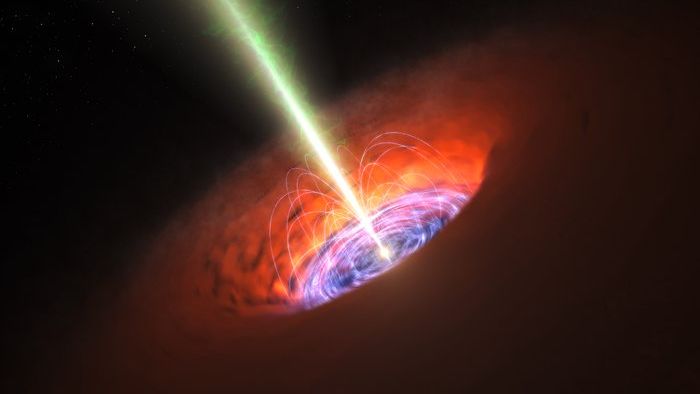Astronomers discover thousands of active red galaxy hearts with powerful radio signals
By Keith Cooper published 1 day ago
A fraction of red quasars have been shown to be young active galaxies smothered in cosmic dust.

A dusty quasar is seen as red and radio loud from Earth. (Image credit: ESO/L. Calçada)
Red quasars filled with cosmic dust produce stronger radio emissions than their bluer, dust-free counterparts — and these phenomena, scientists say, could represent a generation of younger active galaxies with supermassive black holes that only recently switched into overdrive.
"There are still many unanswered questions surrounding red quasars, such as whether black hole winds or radio jets are ultimately responsible for this enhanced radio emission," Victoria Fawcett, lead author of a new study on this finding and an astronomer at Newcastle University in the United Kingdom, said in a statement.
However, Fawcett believes we're getting close to the brink of fully understanding the nature of these incredible marvels.
A quasar is the powerful central region of an active galaxy, and is driven by a supermassive black hole that is being fed huge amounts of matter. That matter forms a disk of gas around the black hole, known as an accretion disk, that reaches millions of degrees and releases fierce radiation winds. Meanwhile, magnetically collimated jets launch outwards from the disk.
More:
https://www.space.com/radio-signal-active-galaxy-hearts-red-quasars
